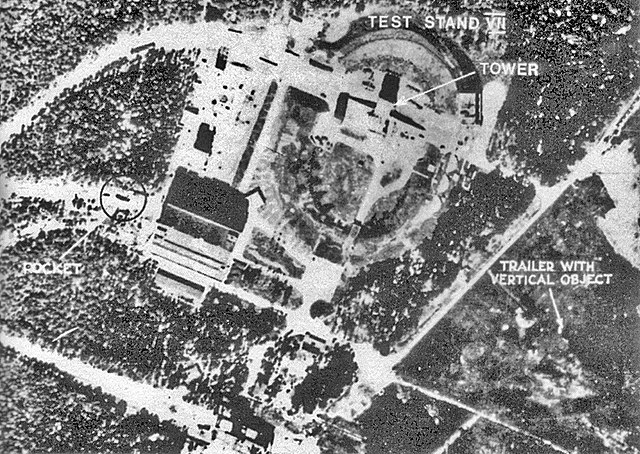Operation Hydra was an attack by RAF Bomber Command on a German scientific research centre at Peenemünde on the night of 17/18 August 1943. Group Captain John Searby, commanding officer of No. 83 Squadron RAF, commanded the operation, the first time that Bomber Command used a master bomber to direct the attack of the main force. Hydra was the first operation against the German V-weapon programme, a campaign later known as "Crossbow". The British lost 40 bombers and 215 aircrew, and several hundred enslaved workers in the nearby Trassenheide forced labour camp were killed. The Luftwaffe lost twelve night-fighters and about 170 German civilian personnel were killed, including two V-2 rocket scientists.
Assessments of the raids effectiveness vary; the United States Strategic Bombing Survey (1945) called the raid "not effective", while in 1943, Joseph Goebbels wrote of a delay in the programme of six to eight weeks.
British plan for the Peenemünde raid
Target 3/Air/389, Attack order with targets highlighted
Peenemünde Army Research Center
The Peenemünde Army Research Center was founded in 1937 as one of five military proving grounds under the German Army Weapons Office (Heereswaffenamt). Several German guided missiles and rockets of World War II were developed by the HVP, including the V-2 rocket. The works were attacked by the British in Operation Crossbow from August 1943, before falling to the Soviets in May 1945.
1943 RAF photo-recon of Test Stand VII at the Peenemünde Army Research Center
A launchpad at Peenemünde as depicted in a miniature at the Deutsches Museum
V-2 launch in Peenemünde (1943)
V2 in the Peenemünde Museum






